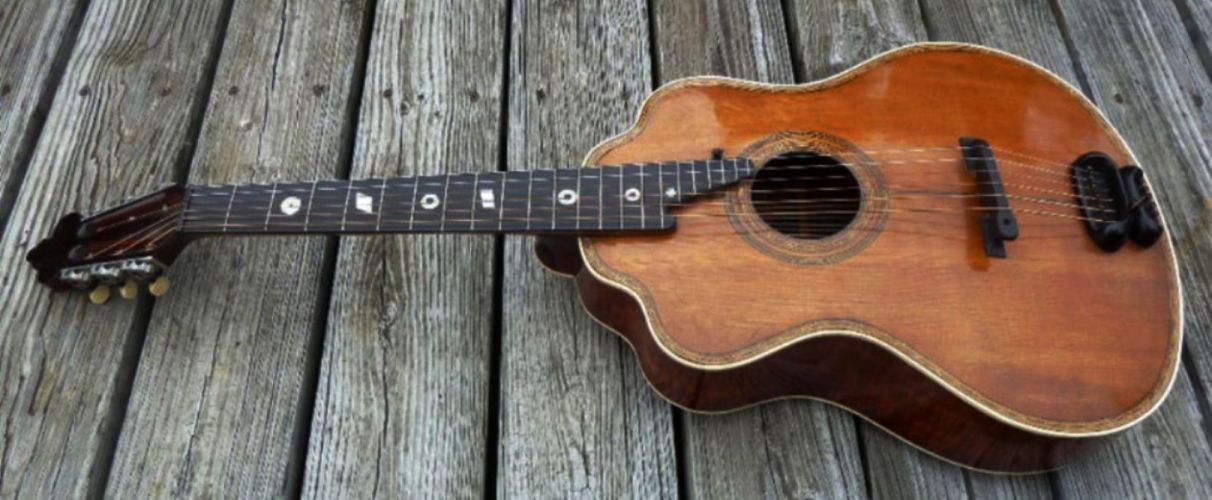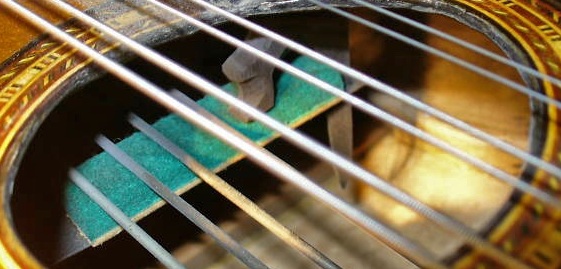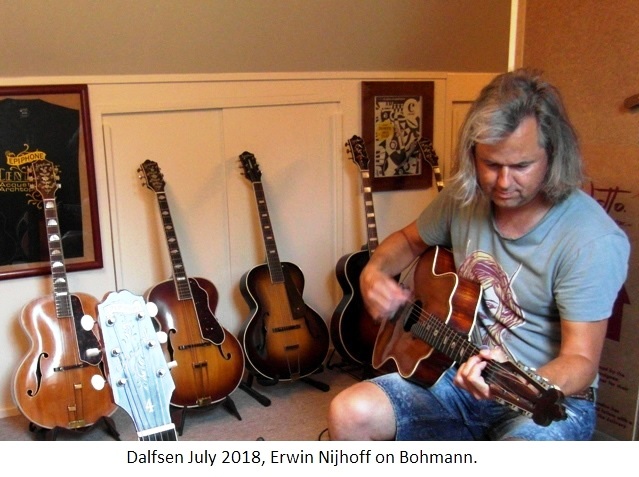
Bohmann : video Bohmann : pictures
The museum purchased the instrument December 2011 on line from Kevin Rush, Chrestwood, IL, USA. No further history known.
“Luthier Joseph H. Bohmann was born in Neumarkt (Bohemia), Czechoslovakia in 1848. He later emigrated to America, and then founded Bohmann’s American Musical Industry in 1878. He produced several types of instruments including flattop acoustic guitars, harp guitars, mandolins, banjos, and violins. Bohmann’s Perfect Artist violins won a number of international honors. see pictures.
Bohmann guitars were available in many different configurations and sizes including 12, 13, 14, and 15 inch bodies. By 1900, Bohmann had thirteen styles of the Concert, Grand Concert, and Standard models.” (Fjestad, p. 107)
References :
Gregg Miner : The Harp Guitars of Joseph Bohmann
Gregg Miner : Gregg’s blog
Zachary R. Fjestad, Blue Book of Acoustic Guitars, 12th edition 2009

Bruce Hammond from Alvin, Texas, who did the entry for Bohmann in the 2nd edition of Grove’s Dictionary of American Music, wrote us January 2012:
“This guitar is not really an archtop guitar; you could stretch the facts and say it is Bohmann’s version of an archtop guitar, if you like. However, the shape of these instruments is convex when viewed from the side, just as described in the patents. Bohmann’s unique cutaway on the upper bouts is often called slope shouldered.
I have found no less than five Bohmann patents see picture that describe this type of instrument, the earliest patent dating 1910, the last one being awarded in 1916 – though he probably began making them a year or two before 1910. Bohmann’s patent for the rods calls them “auxiliary vibrators,” and a letter Bohmann wrote to a customer calls this device the “Triumph tone enhancer”, though I have never seen a newspaper advertisement with this label applied.

Most of these instruments have a certain number of metallic rods inside, with a button attached to a lever for muting or unmuting them, located somewhere on the soundboard. The metal rods always terminate with threaded nuts outside the body, in the butt area, either side of the endpin. The patent describes these rods as capable of being tuned to a certain pitch, but in reality, they are not practical for that purpose. That being said, the rods have the effect of imparting a certain sheen to the instruments’ sound, and in the case of guitars, the extra resonance of these rods gives them a reverberating effect. ”


